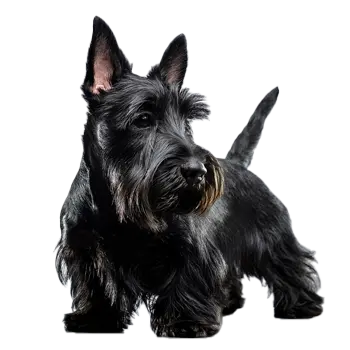The Aberdeen Terrier represents one of the most historically significant names for the breed now officially recognized as the Scottish Terrier. This designation traces directly to the city of Aberdeen in northeastern Scotland, where these distinctive terriers were bred and refined during the nineteenth century. The Aberdeen name gained prominence during a crucial period of breed development and remains cherished by historians and enthusiasts who appreciate the breed's authentic Scottish heritage.
Before standardization of breed names occurred through kennel club recognition, regional naming conventions dominated the terrier landscape in Scotland. Dogs were commonly identified by their place of origin or the estates where specific breeding programs flourished. The Aberdeen Terrier name specifically referenced dogs bred in and around Aberdeen, distinguishing them from similar terriers developed in other Scottish regions. This geographical identification helped buyers and breeders communicate about specific types of dogs during an era when breed standards had not yet been formally established.
The evolution from Aberdeen Terrier to Scottish Terrier reflects broader patterns in purebred dog history. As kennel clubs formed and sought to organize breeds under standardized names, regional designations often gave way to national identifiers. The Scottish Terrier name ultimately prevailed as it encompassed the broader Scottish heritage while avoiding confusion with other Aberdeen-associated breeds or varieties. However, the Aberdeen designation persists in historical documents, early breed literature, and among traditionalists who value this connection to the breed's specific developmental history.
Recognition of the breed under either name acknowledges the same distinctive dog with its characteristic profile, wiry coat, and determined temperament. Major kennel clubs worldwide register these dogs as Scottish Terriers, including the American Kennel Club, the Kennel Club of the United Kingdom, the Canadian Kennel Club, and the Federation Cynologique Internationale. The breed maintains strong recognition across international registries, with consistent standards describing the same physical and temperamental characteristics regardless of whether historical texts reference the Aberdeen or Scottish name.
The persistence of the Aberdeen Terrier name in contemporary usage serves multiple purposes for breed enthusiasts. Historical accuracy demands acknowledgment of original naming conventions when discussing breed development. Preservation of Scottish cultural heritage connects modern dogs to their authentic regional roots. Additionally, some owners simply prefer the specificity and historical resonance of the Aberdeen designation over the more generic Scottish label. Both names describe the same proud, dignified terrier that has captured hearts worldwide for well over a century.
Breed historians note that the Aberdeen Terrier name appeared prominently in show catalogs, breeding records, and canine literature throughout the mid to late 1800s. Early breed pioneers often used Aberdeen and Scottish interchangeably, though regional preferences influenced which name dominated in particular contexts. The consolidation under the Scottish Terrier banner occurred gradually as the breed fancy organized and standardized terminology across different kennel clubs and national registries.

